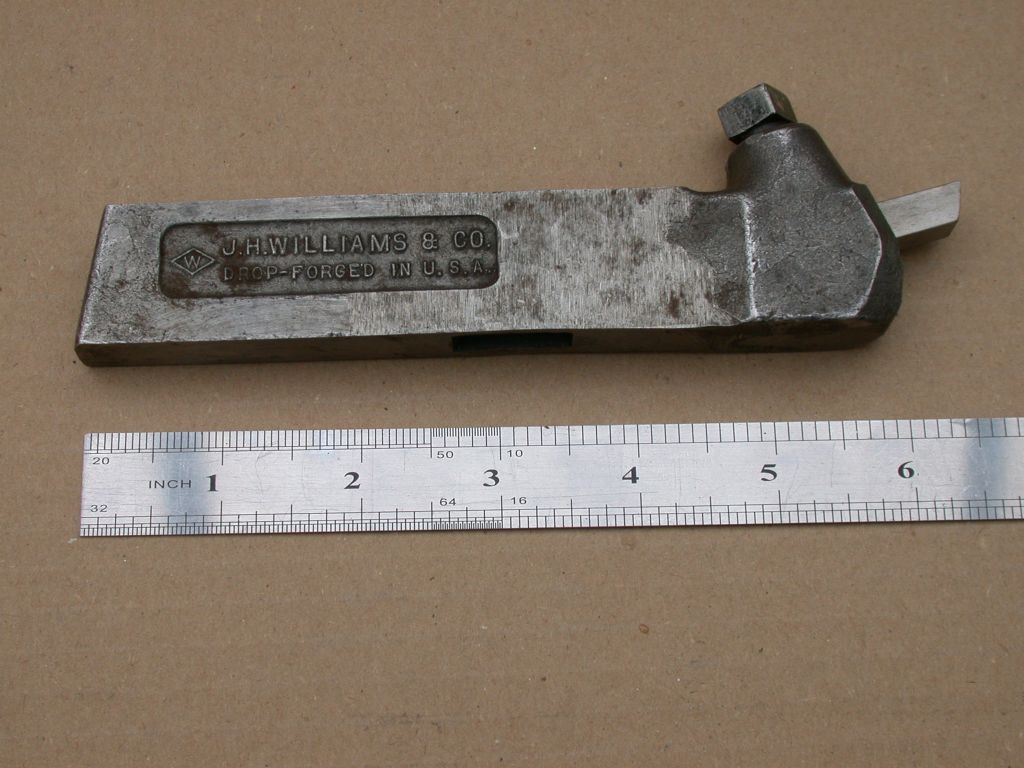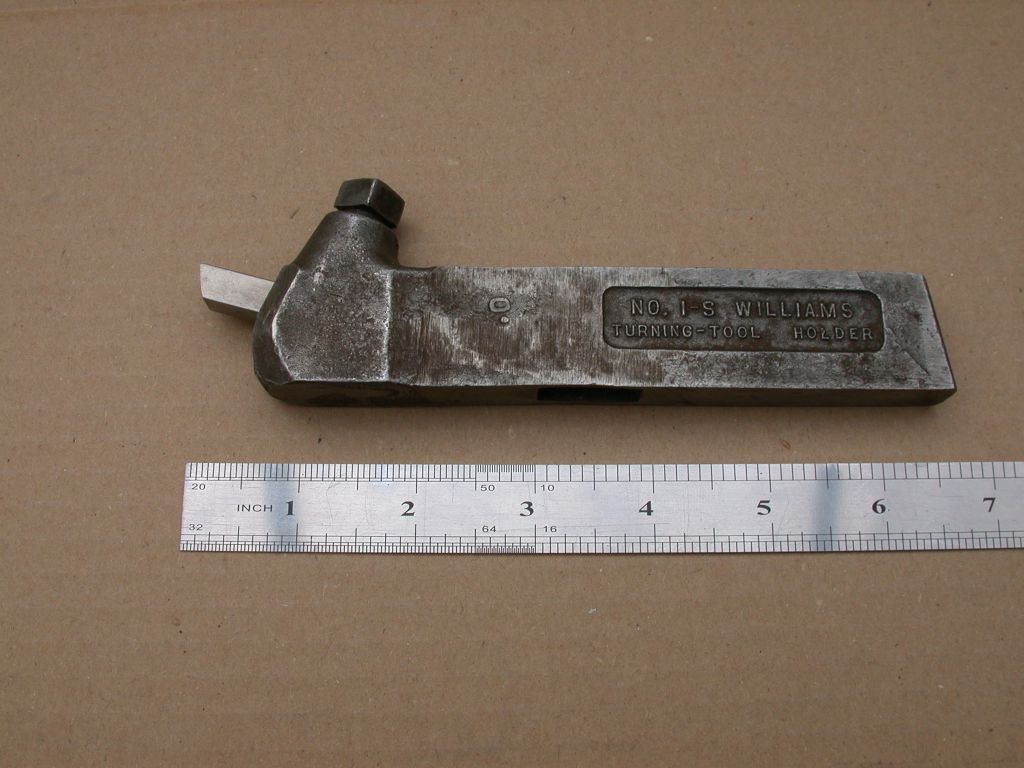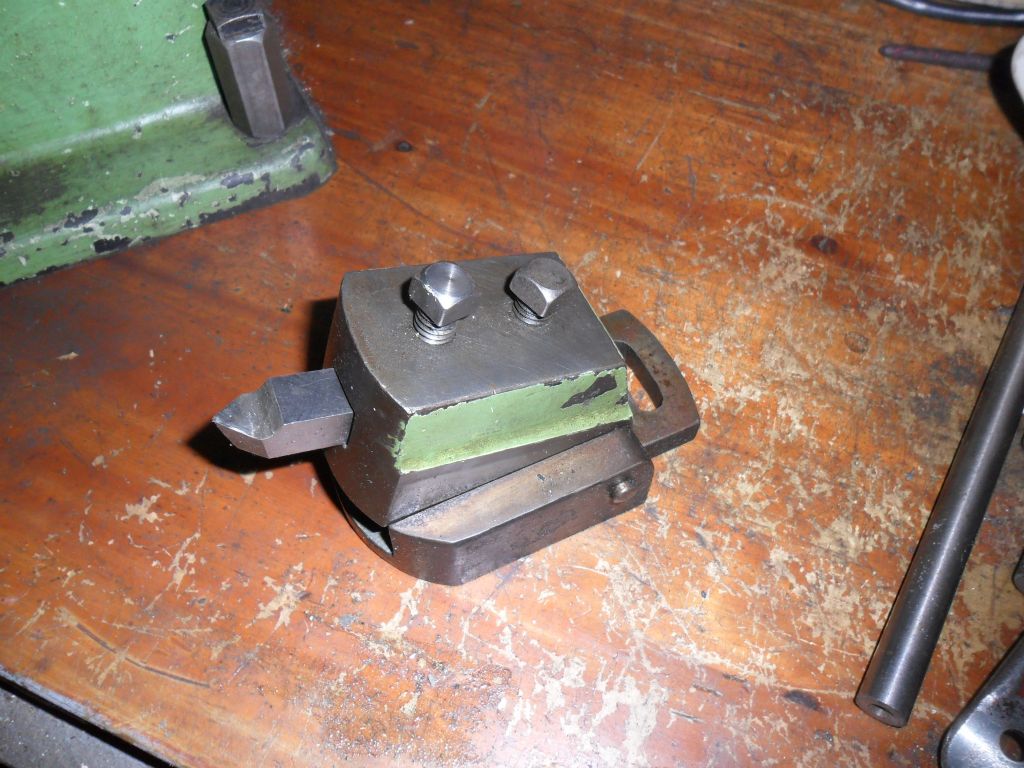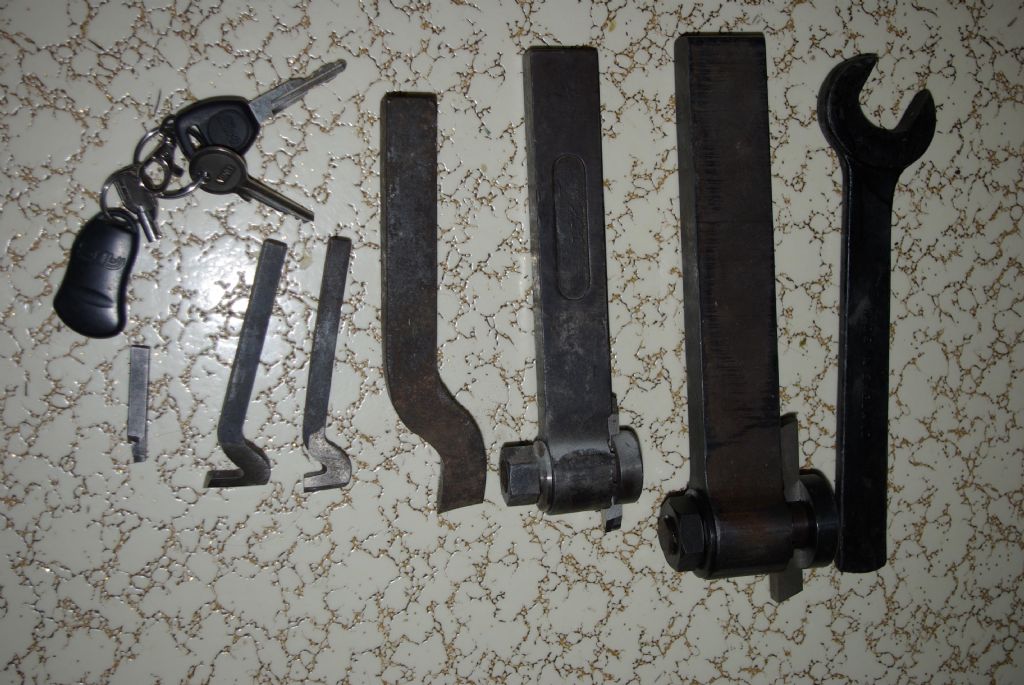You can use the same tools on a shaper as you would on a lathe, except that sometimes on steel you might want a little less top rake than a lathe tool has…as I just said on another thread, if there is too much top rake the tool can sometimes pull down into the job.
The Williams tool holder that Robbo shows above is actually a lathe type. The ones of this general style that were made for shapers held the HSS piece parallel to the base so that you did not get the built in top rake. One reason for this is to avoid the problem mentioned above with too much top rake, the other is that with a shaper, if the HSS or the holder flexs ( and it will) then it tends to increase the depth of cut. However, before anyone else jumps in, I will say that one of my shapers, a 10 inch Alba, came with three of this type, and they work fine.
The type that Paul shows shouldbe used with the nut toward the operator. This means that any flex will reduce the depth of cut, while if the tool is in front flex would increase the cut. They are quite good and the Bradley book tells you how to make one out of a steel bicycle crank. They don't let you use really short pieces of tool steel like the Williams (or Jones and Shipman) type does.
The V shaped tool that Nobby shows is a good general purpose tool for planing down flat surfaces, since it lets you work both ways across the job. That saves having to wind the table back all the way by hand, just add on the new cut, reverse the ratchet and away you go again. For side facing a tool like a left or right hand lathe facing tool is better. I've used a half inch square one much like Nobby shows to take cuts of up to quarter of an inch depth on my 18 inch Alba. You can take a slab of steel or cast iron down to the desired thickness pretty quick at that rate.( but not with a hand shaper!)
Do take care with the chips, they do come off pretty hot and will lodge in all sorts of unexpected places. If they are coming off blue and smoking you are probably pushing things too hard and should reduce the speed a little.
One thing some people will tell you is impossible is using carbide tooling. I have done so with good success using some old style carbide inserts which I have brazed onto key steel shanks. They have worked very well. I haven't been game to try it with replaceable inserts.
If you are grinding your own bits, don't worry too much about the precision of the angles. A rest that can be adjusted is nice, but plenty of good tools have been ground by eye. When they say 5 degrees front clearance, nothing is going to care if it is 4 or 6, or even a little further out. Too little means the tool will rub, too much means the edge will not last as long. For trial purposes you can leave off the top rake. The V tool like Nobby shows has a small flat at the point, this gives a nice finish since each cut just overlaps. This flat should be just a whisker wider than the amount the machine feeds by on each stroke.
John
Saxalby.









